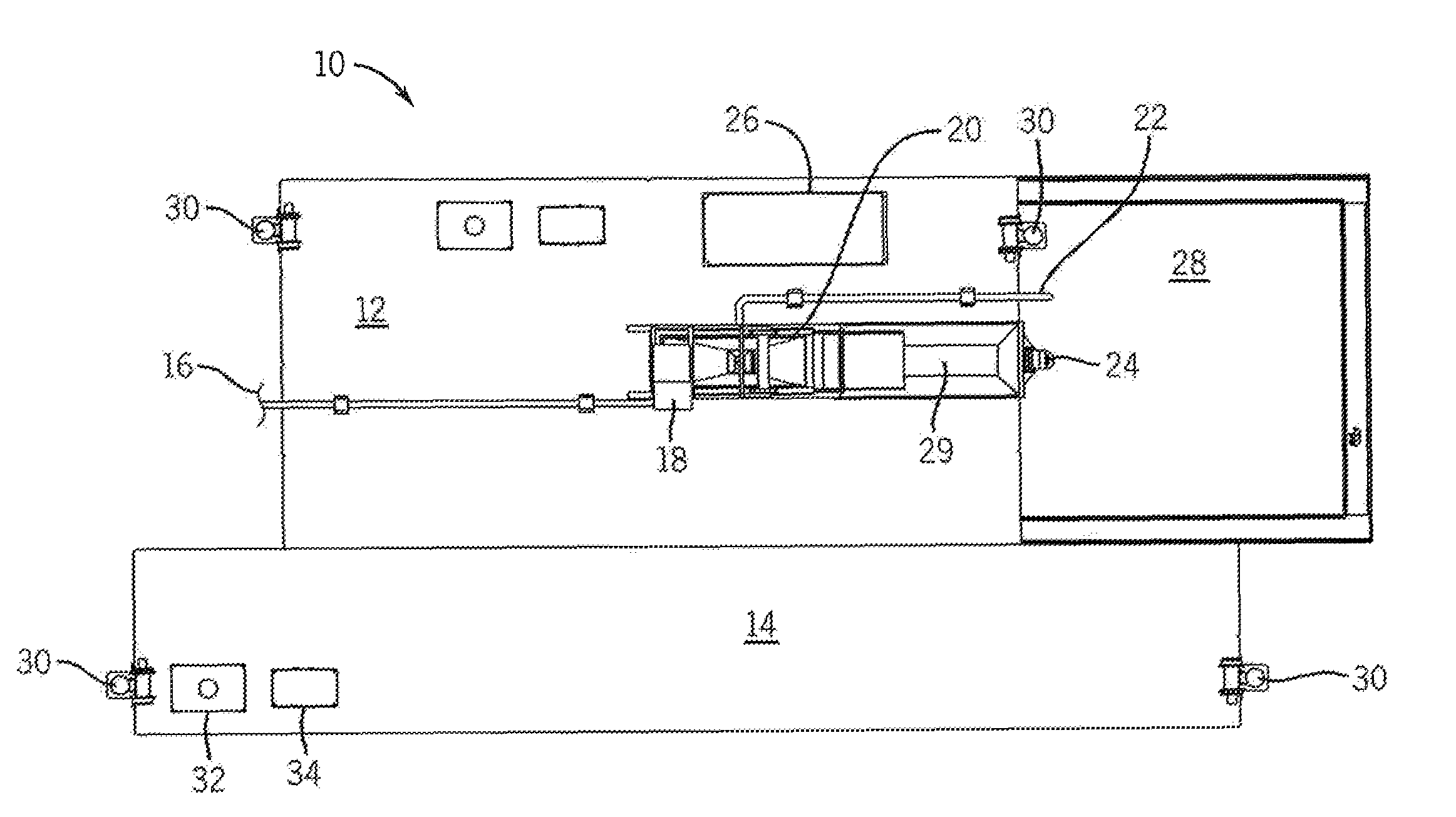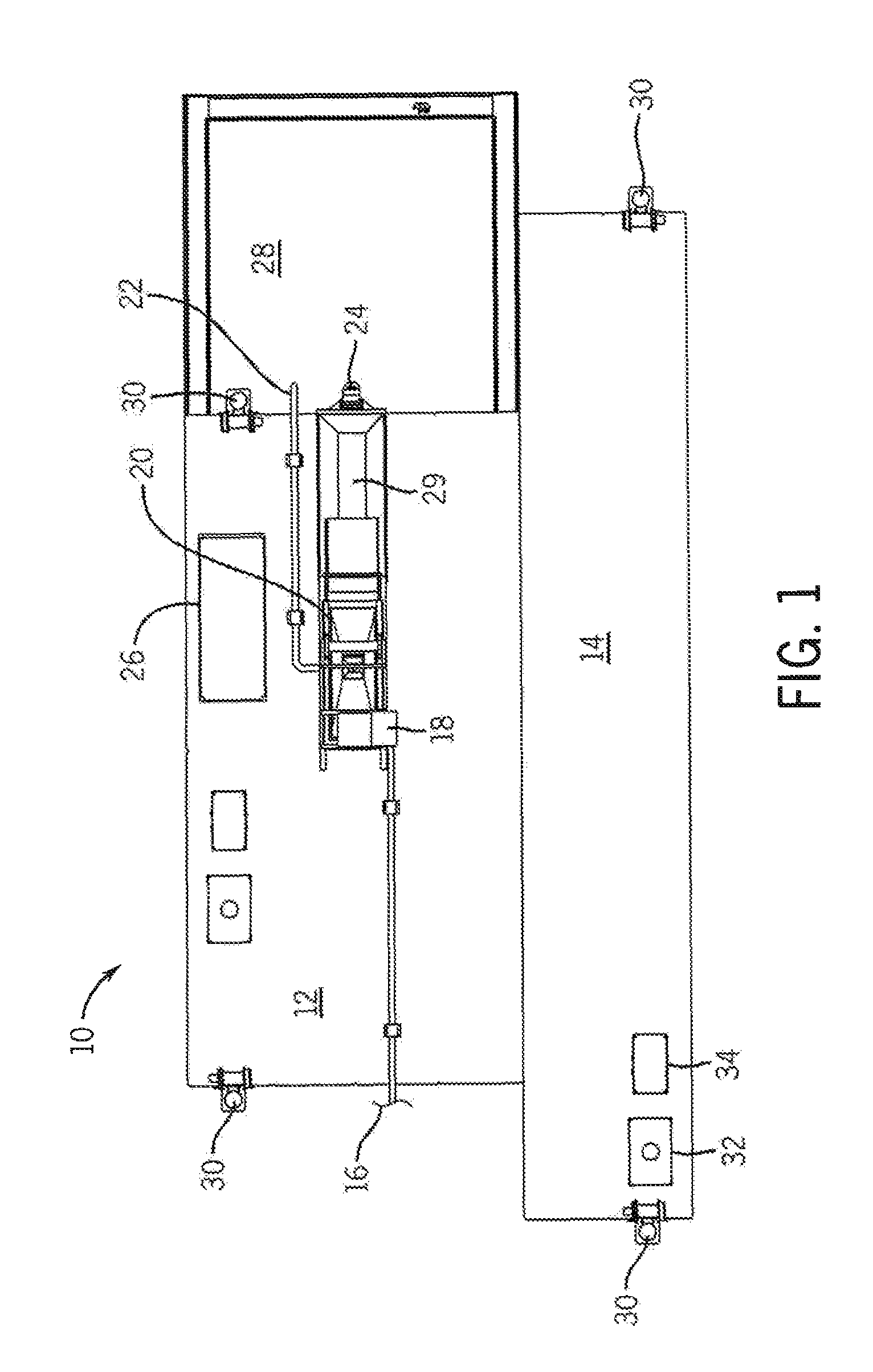Method and system for broadcast sediment capping
a technology of broadcast sediment and capping, applied in the direction of mining structures, artificial islands, instruments, etc., can solve the problems of high cost, limited value, and harmful effects of sub-aquatic contaminated sediments on the environment, and achieve the effect of not cost effective removal of material from a water body
- Summary
- Abstract
- Description
- Claims
- Application Information
AI Technical Summary
Benefits of technology
Problems solved by technology
Method used
Image
Examples
Embodiment Construction
[0019]Referring to FIGS. 1 and 2, sediment capping system 10 is provided. System 10 includes spreader barge 12, template barge 14, and capping material providing means 16. Spreader barge 12 includes capping material receiving means 18, capping material shaker 20, slurry water output 22, capping material spreading means 24, control center 26, distribution pool 28, capping material reservoir 29 and at least one positioning means 30. Template barge 14 is releasably engaged with spreader barge 12 while the capping material is being distributed by spreader barge 12. Barge 14 includes at least one positioning means 30, fuel tank 32, and barge movement means 34. Spreader barge 12 and template barge 14 float on waterway surface 35. The slurry enters the spreading barge 12 through the providing means 16 and is received by the receiving means 18, which can be a hopper or alternative structure designed to receive capping material slurry. The shaker 20 separates the capping material from the wa...
PUM
 Login to View More
Login to View More Abstract
Description
Claims
Application Information
 Login to View More
Login to View More - R&D
- Intellectual Property
- Life Sciences
- Materials
- Tech Scout
- Unparalleled Data Quality
- Higher Quality Content
- 60% Fewer Hallucinations
Browse by: Latest US Patents, China's latest patents, Technical Efficacy Thesaurus, Application Domain, Technology Topic, Popular Technical Reports.
© 2025 PatSnap. All rights reserved.Legal|Privacy policy|Modern Slavery Act Transparency Statement|Sitemap|About US| Contact US: help@patsnap.com



